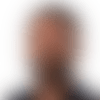The free agency market officially opens at 4 p.m. ET on March 13. Before signings start taking over your news feed, Jeremy Bergman provides three big needs for each AFC team (listed in alphabetical order):
NOTE: Projected cap-space figures were gathered from Over The Cap on March 8.
Baltimore Ravens: Linebacker, wide receiver, running back
Projected cap space: $25.6 million.
Lamar Jackson might be Baltimore's bell cow next season and every one going forward, but the Ravens remain in need of an every-down ball carrier. Alex Collins was recently waived following an arrest, and Gus Edwards is currently the starter. Division rival Le'Veon Bell is available and a potential target. The loss of C.J. Mosley at ILB could be temporary -- Baltimore is reportedly trying to re-sign him -- or permanent, while Terrell Suggs and Za'Darius Smith leave holes on the edge. John Brown and Michael Crabtree departing open up two receiver slots that could be filled by a deep but not top-heavy FA class.
Buffalo Bills: Offensive line, pass catcher, cornerback
Projected cap space: $75.9 million.
As with last season, Buffalo enters 2019 with needs at damn near every offensive position save for quarterback. The right side of the Bills' offensive line (John Miller, Jordan Mills) is hitting free agency, and Buffalo's projected starting guards at the moment are Wyatt Teller and Vladimir Ducasse. Receivers Zay Jones and Robert Foster and tight end Jason Croom are currently Josh Allen's top receiving targets. Plus, LeSean McCoy is entering his final season under contract and not aging gracefully. Lucky for Buffalo, general manager Brandon Beane enters free agency with nearly $80 million in cap space.
Cincinnati Bengals: Linebacker, offensive line, tight end
Projected cap space: $49.5 million.
Vontaze Burfict is one of the league's most unreliable -- or at least reliably unavailable -- players, and Preston Brown is hitting free agency. Cincinnati's defense needs leadership in the middle to complement the strength of its defensive line. The selection of Billy Price and trade for Cordy Glenn was a start on the other side of the ball, but more is demanded, especially at the tackles, where depth is wanting. With Tyler Eifert and C.J. Uzomah both out the door, at least for now, Cincy must acquire another pass catcher for Andy Dalton. That could come in the draft or free agency, the latter of which boasts few bona fide options, save for Jared Cook.
Cleveland Browns: Wide receiver, offensive line, linebacker
Projected cap space: $79.7 million.
While rumblings abound that John Dorsey is set to make a splash opposite Jarvis Landry, I'll take this time to shill for Cleveland to acquire a big-name receiver in free agency to pair with Landry and Antonio Callaway. WR2 is perhaps Cleveland's most sub-standard offensive position in the starting lineup and is unlikely to be filled by Rashard Higgins or Breshad Perriman next season. With over $70 million in cap space, Cleveland can also improve at left tackle and on the right side of the offensive line; Kevin Zeitler is reportedly already on the block. The Browns need depth all over their defense and can start at strong-side linebacker, where the just-released Jamie Collins once roamed.
Denver Broncos: Offensive line, defensive back, tight end
Projected cap space: $37.1 million.
John Elway "took care" of Denver's quarterback quandary when he traded for Joe Flacco, but who will protect the injury-prone veteran? The Broncos are losing center Matt Paradis and right tackle Jared Veldheer to free agency, left guard Ronald Leary is coming off an Achilles injury and Connor McGovern isn't the long-term solution at right guard. Denver also lacks a reliable pass-catching tight end for the TE-friendly Flacco. On the other side of the ball, starting corner Bradley Roby is heading to market, and the Broncos let go of starting safety Darian Stewart. Denver has, for some reason, remained in the market for Antonio Brown, but the club's more pressing concerns reach a mile high.
Houston Texans: Offensive line, cornerback, strong safety
Projected cap space: $74 million.
The directive, for the third year in a row, should be to protect Deshaun Watson at all costs. Watson took a league-high 62 sacks last year, when Houston spent 11.2 percent of its cap on the offensive line (28th in league). Right now, the Texans are slated to rank 29th in 2019. Time to invest and upgrade in the trenches, especially at the tackles. After cutting Kevin Johnson and letting Kareem Jackson and Kayvon Webster walk, Houston must retool the secondary, where it will also be missing Tyrann Mathieu. The Texans want to re-sign the veteran safety, but it wouldn't hurt to let him walk to a safety-rich market and then strike gold with another outfielder.
Indianapolis Colts: Wide receiver, defensive end, defensive back
Projected cap space: $102 million.
Thanks to some brilliant scouting and patient spending habits, the Colts, a Divisional Round runner-up, are set to be one of the league's most improved sides in 2019. With over $100 million in cap space, Indy has the capability to acquire top-tier talent at every pressing position. Adding a reliable No. 2 or slot wideout across from T.Y. Hilton should be one of Chris Ballard's top priorities, as should acquiring one of the many available edge rushers to hit free agency if he doesn't draft one. Re-signing Margus Hunt was a great inexpensive move, but the Colts must develop a greater pass rush out of their defensive ends next season. On the back end, Pierre Desir and Clayton Geathers are both free agents, but Indy has the capital to upgrade.
Jacksonville Jaguars: Quarterback, pass catcher, offensive line
Projected cap space: $30.1 million.
Nick Foles is likely on his way to save the day, but even if he's not, a change is needed and coming under center. Blake Bortles should be released or traded either before or soon after the start of free agency, paving the way for a new signal-caller. Strapped for cash, though, Jacksonville still has to address other needs on offense, namely a lack of depth at wide receiver and on the offensive line. The Jags need a reliable, healthy wideout to pair with Marqise Lee and Dede Westbrook, and a tight end to compete with Ben Koyack. Meanwhile, Jacksonville has no backups on the left side of the line, which is not what you want to sell a new QB on.
Kansas City Chiefs: Pass rusher, defensive back, center
Projected cap space: $10.1 million.
Exit, Justin Houston. And potentially Dee Ford. Enter ... ? The Chiefscut the former and, after tagging the latter, could trade him as part of a shake-up in line with their defensive regime change. If that's the case, then Kansas City must acquire some premier 4-3 edge rusher help in either the draft or free agency as a first priority. The 2018 Chiefs' Achilles' positions were in the defensive backfield, and that could use a reboot, especially with Steven Nelson hitting free agency and Eric Berry falling off. Kansas City could attack the RB position with Spencer Ware and Kareem Hunt gone, but the Chiefs must also find a replacement for Mitch Morse at center.
UPDATE: The Chiefs signed running back Carlos Hyde to a one-year, $2.8 million contract.
Los Angeles Chargers: Linebacker, defensive back, defensive tackle
Projected cap space: $22.3 million.
The Bolts don't need much outside of the middle of their defense. Aside from Tyrell Williams and the aging Antonio Gates, Los Angeles isn't scheduled to lose any offensive starters, though staying with Sam Tevi at right tackle is not sustainable. The same can't be said on the other side of the ball, where middle backers Denzel Perryman and Hayes Pullard are free agents, as are Kyle Emanuel, Adrian Phillips, Jason Verrett, Corey Liuget and Brandon Mebane. L.A. can't play seven defensive backs all season.
Miami Dolphins: Quarterback, defensive end, offensive line
Projected cap space: $22.6 million.
The Ryan Tannehill terror is soon to cease, but who his replacement will be in South Florida is anyone's guess. Miami is entering a rebuild with new coach Brian Flores and has intimated it doesn't want to spend top-market value on a free agent like Nick Foles or even Teddy Bridgewater. The Fins are expected to select their franchise quarterback in this draft or the next, but in the meantime? Elsewhere, significant improvements must be made on the edge, where Cam Wake, Andre Branch and potentially Robert Quinn won't be next season. The Dolphins must also replace Ja'Wuan James at right tackle if they can't re-sign him.
New England Patriots: Defensive line, pass catcher, special teams
Projected cap space: $23.9 million.
Bill Belichick and the champs rarely bite too big in free agency, and with precious little cap space, likely won't make any drastic moves. But there are needs to be addressed, even on their Super Bowl roster. First and foremost, the Pats will have to replace Trey Flowers and Malcom Brown, two starters along a defensive line that humbled top offenses en route to the Lombardi. Rob Gronkowski, Chris Hogan and Cordarrelle Patterson could all be out of New England next year, so adding another pair of hands is a premium. Lastly, two-thirds of the Pats' field-goal battery is hitting the market. New England needs a new kicker, lefty punter and kick returner.
New York Jets: Offensive linemen, edge rusher, running back
Projected cap space: $92.1 million.
Situated at the top of a trench-friendly draft, the Jets are likely to cash in on one of the top defensive linemen coming out. New York still needs sizable edge rushing help and could acquire some in Trey Flowers or Preston Smith in free agency. But the Jets must first target any and all available offensive linemen to fill needs at left guard, center and right tackle. New York has the cash (around $100 million) to compensate the competitive O-line market and should still have some left over to make a run at Le'Veon Bell or Tevin Coleman at running back.
UPDATE: The Raiders have agreed to trade guard Kelechi Osemele and a 2019 sixth-round pick to the New York Jets for a fifth-round pick.
Oakland Raiders: Defensive back, edge rusher, wide receiver
Projected cap space: $64.4 million.
I mean, where to begin? Jon Gruden traded away his top pass rusher (Khalil Mack) and wideout (Amari Cooper) last year in exchange for two extra first-round picks this year (plus one more for Mack next year). Now, he and ex-NFL Network draft guru Mike Mayock are in the market for a wide receiver and edge rusher or two. Funny how that works. In addition to courting defensive ends and receivers, Oakland also needs work in the secondary, where Marcus Gilchrist, Reggie Nelson, Leon Hall and Rashaan Melvin are all hitting free agency.
UPDATE: The Steelers have agreed to trade Antonio Brown to the Raiders for third- and fifth-round picks. In a separate move, the Raiders agreed to trade starting left guard Kelechi Osemele and a 2019 sixth-round pick to the Jets for a fifth-round pick.
Pittsburgh Steelers: Linebacker, cornerback, wide receiver
Projected cap space: $12.2 million.
Pittsburgh still hasn't recovered from the traumatic loss of Ryan Shazier in 2017 and must look to improve at inside linebacker, where Jon Bostic and Vince Williams currently hold court. Same goes for the corners; Coty Sensabaugh is hitting the market, Artie Burns isn't the answer and Joe Haden is nearing free agency. And then there's the receiver room, which could be short one bleached and lively presence if and when Antonio Brown is traded. Pittsburgh could choose to go into 2019 with JuJu Smith-Schuster and James Washington as its starters, but Washington hasn't shown indications he's ready for that workload.
UPDATE: The Steelers agreed to trade Antonio Brown to the Raiders for third- and fifth-round picks.
Tennessee Titans: Wide receiver, defensive end, guard
Projected cap space: $43.5 million.
For Tennessee to truly evaluate Marcus Mariota and whether he can remain the future under center, it needs to surround him with more playmakers. Corey Davis and Derrick Henry can't do it alone. The Titans should be in the market for one or two receivers to spread defenses out, improving on their current crop of Tajae Sharpe and Taywan Taylor. Elsewhere, Tennessee is tasked with replacing departing veterans: Brian Orakpo and Derrick Morgan on the defensive line and Quinton Spain at left guard.
Follow Jeremy Bergman on Twitter @JABergman.












